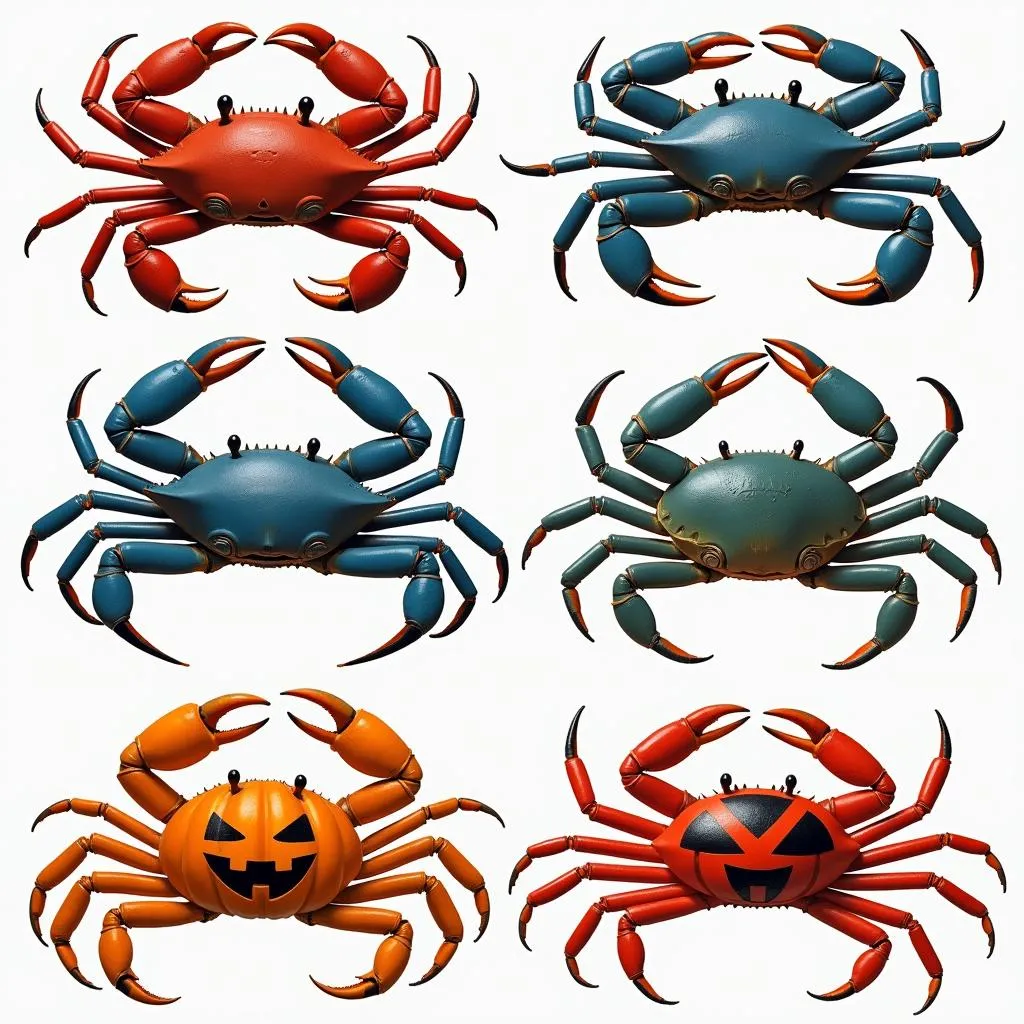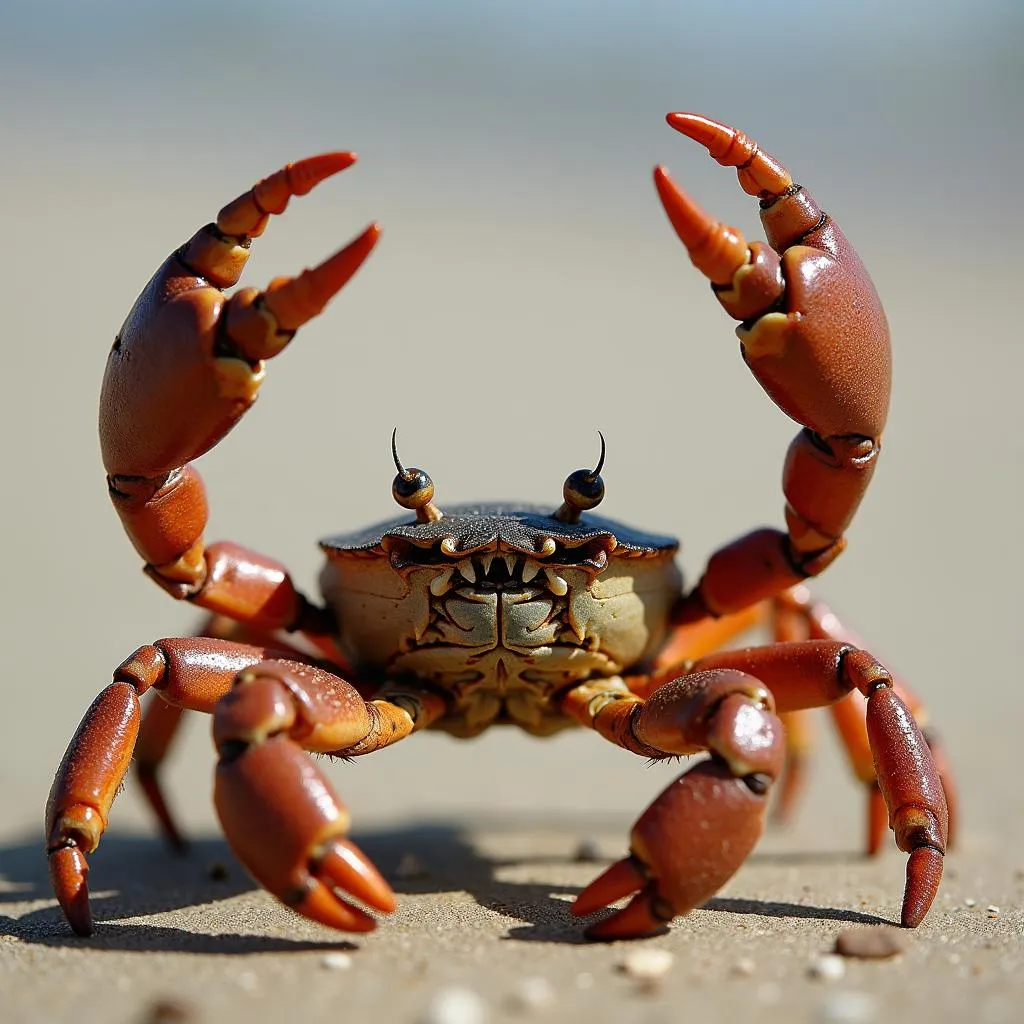Crabs, those fascinating crustaceans that scuttle sideways across beaches and ocean floors, are known for their vibrant personalities and… vibrant colors? You might be surprised to learn that crabs come in a stunning array of hues, from the bright reds and oranges we often associate with cooked crab to subtler shades of blue, green, and even purple. So, What Color Are Crabs, really? The answer, it turns out, is not so simple.
 Different crab species exhibiting color variations
Different crab species exhibiting color variations
Factors Influencing Crab Coloration
Crab coloration is influenced by a multitude of factors, including:
- Species: Each crab species has a typical color range, dictated by its genetics and evolutionary history. For instance, the blue crab, true to its name, generally sports a bluish-green carapace (shell), while the aptly named Halloween crab boasts a striking orange and black pattern.
- Habitat: A crab’s environment plays a significant role in its coloration. Crabs living amongst colorful coral reefs often exhibit brighter, more diverse hues for camouflage and communication. In contrast, crabs inhabiting muddy bottoms tend to be duller browns and greens to blend in with their surroundings.
- Diet: The food a crab consumes can also impact its color. Carotenoids, pigments found in algae and other marine life, are known to contribute to the vibrant reds, oranges, and yellows seen in many crab species.
- Age and Sex: Some crabs undergo color changes throughout their lifespan. For instance, young crabs might be more drab in color to avoid predators, while adults develop brighter hues for mating displays. In certain species, males and females exhibit distinct color differences, with males often being more vibrant to attract mates.
 A blue crab blending in with seaweed
A blue crab blending in with seaweed
The Science Behind Crab Colors
But how do crabs actually produce these incredible colors? The answer lies in pigments and structural coloration:
- Pigments: Like other animals, crabs possess pigments within their exoskeletons. These pigments absorb certain wavelengths of light, reflecting back the colors we perceive. Carotenoids, melanins (responsible for browns and blacks), and pterins (producing yellows and reds) are some of the primary pigments found in crabs.
- Structural Coloration: This fascinating phenomenon occurs when the physical structure of a crab’s exoskeleton interacts with light, scattering specific wavelengths and creating vibrant, iridescent colors. The shimmering blues and greens seen in some crabs are often the result of structural coloration.
The Significance of Crab Colors
Crab coloration isn’t just about aesthetics; it serves crucial purposes in their survival and social interactions:
- Camouflage: As mentioned earlier, color plays a vital role in camouflage, allowing crabs to blend seamlessly into their surroundings and avoid detection by both predators and prey.
- Communication: Crabs use their coloration for communication, particularly during courtship rituals. Brightly colored males often perform elaborate dances and displays to attract females.
- Warning Signals: Some crab species possess bright, conspicuous colors that serve as a warning to potential predators. These colors often signify toxicity or an unpleasant taste, deterring attackers.
 A male fiddler crab with an enlarged claw, waving to attract a mate
A male fiddler crab with an enlarged claw, waving to attract a mate
Conclusion
The question of “what color are crabs” reveals a fascinating world of biological complexity and evolutionary adaptation. From the camouflaged hues of the mud crab to the vibrant reds of the cooked Dungeness crab, each color tells a story of survival, communication, and the incredible diversity of the crustacean world. So, the next time you encounter a crab, take a moment to appreciate its unique coloration and the fascinating science behind it.
